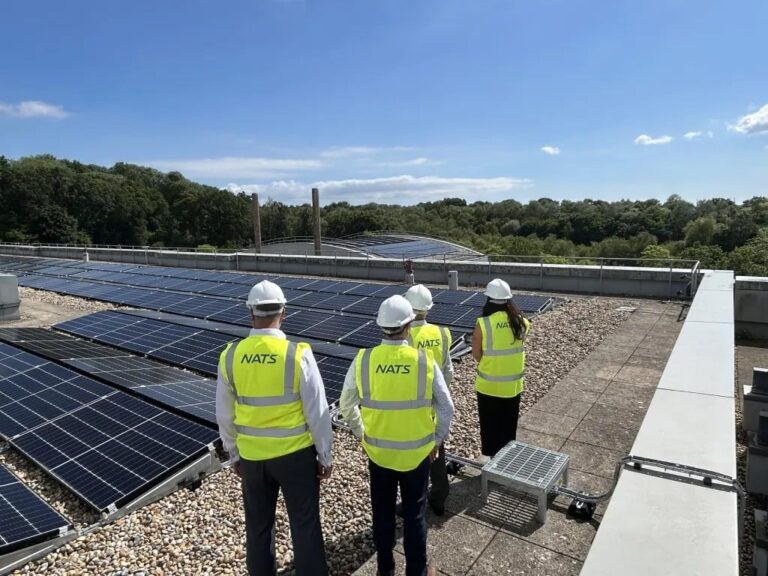South Ayrshire Council has approved the installation of a solar installation comprising both ground and rooftop installations at the National Air Traffic Services (NATS) site in Prestwick, Scotland.
Initial plans for a rooftop solar installation were approved in 2023, but NATS withdrew and resubmitted them to develop the ground-mounted element.
Up to 2,200 panels will be installed at the site, mainly on the roof of the air traffic control center. The installation will have a peak power of up to 1,132 kWp, with the rooftop arrays providing 701 kWp and the ground-mounted system providing 431 kWp.
Once fully operational, the installation could supply up to 21% of the Prestwick Centre’s electricity needs, according to NATS – no small feat considering it is operational 24/7. The municipality ruled that the installation would not detract from the overall character and amenity of the area.
The Prestwick Center is located in an industrial area near Glasgow Airport. The air traffic services provider also operates from a site in Swanwick in Hampshire. In July this year, NATS announced it had successfully installed solar on the roof of its center in Swanwick as part of its plans to become a net-zero emissions company by 2035 and carbon negative by 2040.
In its design and access statement, submitted as part of the planning application, NATS said the solar development would be a “significant investment” by the company. NATS has also stated its intention to start installing smaller-scale solar energy systems in remote locations from next year.
UK airports themselves have often explored the use of rooftop solar PV, alongside ground-mounted solar PV, on their chosen route to net zero emissions and to meet their electricity demand in a cost-effective way.
Farnborough Airport in Hampshire recently completed a £2 million rooftop solar PV project with an installed capacity of 1,700 kWp. Solivus began building the rooftop solar PV system in January 2024 and has since installed 4,000 lightweight solar panels in hangars one and two, the terminal, the control tower and the Aviator Hampshire hotel at the airport.
Solar energy portal has previously reported that solar energy provided London Southend Airport with 25% of its annual energy consumption to reduce its carbon footprint.
In May 2023, Bristol Airport announced that it had started construction on a 2.8 hectare solar PV facility, which would help generate at least 16% of the airport’s direct energy needs over the course of the year .
In September 2023, energy supplier SSE Energy Solutions confirmed it would explore developing a “major solar project” at Teesside Airport, with a potential capacity of around 50 MW. This will help achieve the airport’s net zero target by 2030.


